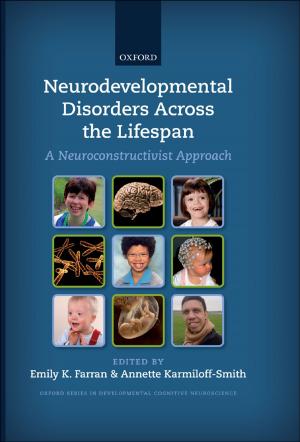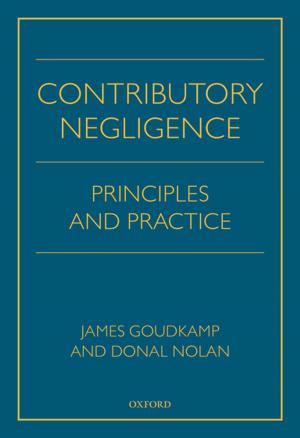Emotion Regulation and Psychopathology in Children and Adolescents
Nonfiction, Health & Well Being, Psychology, Clinical Psychology, Medical| Author: | ISBN: | 9780191078347 | |
| Publisher: | OUP Oxford | Publication: | July 4, 2017 |
| Imprint: | OUP Oxford | Language: | English |
| Author: | |
| ISBN: | 9780191078347 |
| Publisher: | OUP Oxford |
| Publication: | July 4, 2017 |
| Imprint: | OUP Oxford |
| Language: | English |
Emotions are a cardinal component of everyday life, affecting one's ability to function in an adaptive manner and influencing both intrapersonal and interpersonal processes such as self-esteem and relationship satisfaction. However, when emotions are overpowering, they can become debilitating and intrusive in daily life. In general, emotion regulation competencies become differentiated as a function of development. Children tend to seek support from adults or use behavioral techniques to regulate their emotions. As children reach adolescence, they become increasingly self-reliant, engaging in planful problem solving and utilizing cognitive strategies (for example, reappraisal) more frequently when faced with stressful life events. While the majority of children and adolescents will successfully navigate these developmental stages by cultivating adaptive coping skills, for some, this marks the beginning of lifelong challenges with emotion regulation and resultant dysregulation. This book provides a guide to dealing with these problems, with contributions from leading experts in the field. Divided into 4 sections, it starts by providing an introduction to the field of emotion regulation in adolescents, touching upon the cultural, social, biological, and developmental issues related to this topic. Section two discusses several psychological disorders impacting adolescents such as anxiety, depression and conduct problems, while also discussing the underlying role emotion regulation plays in the development, maintenance and propagation of these disorders. In addition, this section considers the implication for treatment by discussing the latest evidence-based intervention approaches. The third section focuses on the role of emotion regulation in specific behaviour/populations, such as children of abuse and neglect, as well as adolescents who engage in nonsuicidal self-injury. The final section includes an epilogue, discussing emergent areas of research, answering questions of a theoretical, psychological, and empirical nature. For all those working in the field of mental health, whether novice or experienced, the book provides a valuable guide to understanding and treating these increasingly common problems.
Emotions are a cardinal component of everyday life, affecting one's ability to function in an adaptive manner and influencing both intrapersonal and interpersonal processes such as self-esteem and relationship satisfaction. However, when emotions are overpowering, they can become debilitating and intrusive in daily life. In general, emotion regulation competencies become differentiated as a function of development. Children tend to seek support from adults or use behavioral techniques to regulate their emotions. As children reach adolescence, they become increasingly self-reliant, engaging in planful problem solving and utilizing cognitive strategies (for example, reappraisal) more frequently when faced with stressful life events. While the majority of children and adolescents will successfully navigate these developmental stages by cultivating adaptive coping skills, for some, this marks the beginning of lifelong challenges with emotion regulation and resultant dysregulation. This book provides a guide to dealing with these problems, with contributions from leading experts in the field. Divided into 4 sections, it starts by providing an introduction to the field of emotion regulation in adolescents, touching upon the cultural, social, biological, and developmental issues related to this topic. Section two discusses several psychological disorders impacting adolescents such as anxiety, depression and conduct problems, while also discussing the underlying role emotion regulation plays in the development, maintenance and propagation of these disorders. In addition, this section considers the implication for treatment by discussing the latest evidence-based intervention approaches. The third section focuses on the role of emotion regulation in specific behaviour/populations, such as children of abuse and neglect, as well as adolescents who engage in nonsuicidal self-injury. The final section includes an epilogue, discussing emergent areas of research, answering questions of a theoretical, psychological, and empirical nature. For all those working in the field of mental health, whether novice or experienced, the book provides a valuable guide to understanding and treating these increasingly common problems.















